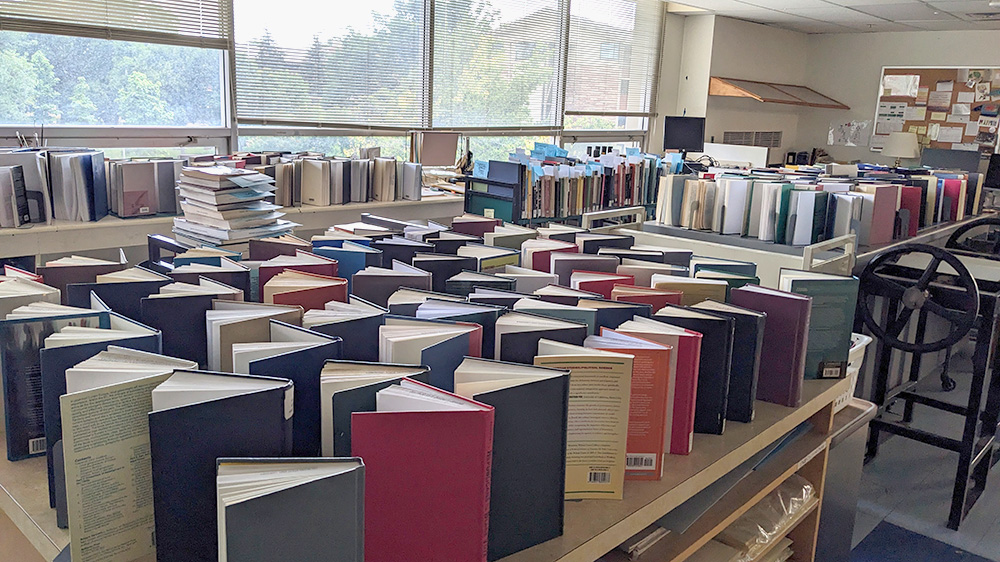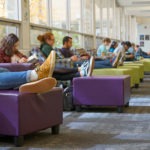
When a flash flood hits the Morgan Library, it’s all hands on deck.
After the campus-wide flood in 1997, the Colorado State University Libraries team developed extensive disaster preparedness procedures in the event of another natural disaster.
So employees were ready to jump into action this summer when a flash flood hit campus on the evening of July 31.
The storm and its impact
Three inches of rain fell in two hours.
“The eye of the storm was at the corner of the library near the intramural fields,” recalled lead preservationist at the Libraries, Ann Schwalm.
The University’s Facilities team reported flooding throughout campus, with some power outages and some water inside buildings.
Building manager, Robert Ayala, had his eye on the storm all evening long, and kept the rest of the team up-to-date about campus reports. Before dawn on Aug. 1, he completed the first inspection of the Morgan Library, checking for damage to materials, walls, carpets, and ceilings.
There were two areas of notable impact: water runoff from the parking lot had affected parts of the basement, and a few ceiling leaks on the second floor were affecting shelved books.
Although the impacts were relatively minor, the library was closed to the public so that employees could fully assess the damage and ensure visitor safety. With no visitors, the library was unusually quiet, but employees were busy.
Ayala’s team covered wet books on the shelves with protective sheets of plastic to prevent further damage, until the leaks could be repaired and the books evaluated.
Preserving the books

In the late morning, employees from the Digital and Archives Services team began the process of manually checking each damaged book. Student and professional staff worked all day side-by-side in the Preservation Lab to assess about 600 books.
“We manually checked each book to see to what extent they are damaged,” said Schwalm. “Then we can quantify how wet the books are using a moisture meter called an Aqua-Boy.”
Books that were slightly or moderately wet were air dried. The team fanned out books on almost every surface of the Preservation Lab. Wetter books were wrapped “like steaks” and put in a freezer.
Although freezing may be a surprising preservation technique, doing so can help dry the books and allow employees more time to create a plan and prevent mold, which can set in within 48 hours. The damaged books filled two large freezers.
During disaster recovery, teamwork helps processes move quickly and efficiently. The cooperation among different teams in the library meant that about half the books have already returned to the shelves.
The remaining books in the freezers will be re-checked over the next couple month and reassessed to see if they can be returned to the shelves or if they will need to be replaced.




